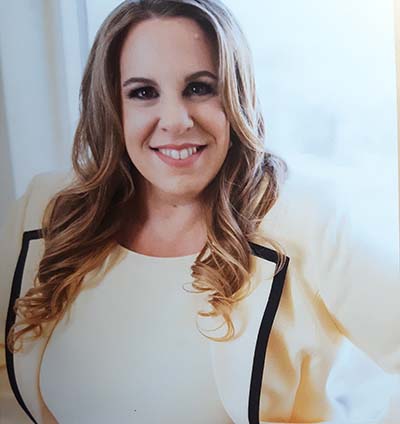6 Self-help Tips to Relieve Worry and Anxiety

I originally wrote and published this article in September 2020, a couple of months before the 2020 presidential election. Worry and Anxiety resonate strongly with me again this year and I thought this article would provide some needed advice to get through this election season.
Self-help tip #1: Create a worry period
Worry and anxiety are controlling your life because you feel that you have no control over them. All the ideas to stop this process haven’t worked. What Now?
1. Why trying to stop anxious thoughts doesn’t work
You distract, ignore, or suppress your worrying thoughts for as long as you can only to find them bounce back stronger than ever. Thought-stopping brings attention to the very thoughts you are trying to avoid. Because they have taken prominence in your mind, these thoughts seem even more important. Although this strategy doesn’t work there are solutions you can try.
2. Learning to postpone worrying:
a. Create a “worry period”. Choose a set time and place for worrying. It should be the same time every day and early enough that it won’t make you anxious before you go to bed. You can worry about everything during this worry time. The rest of the day is off-limits to these problems.
b. Postpone your worry. If your worry pops into your head during the day, make a note of it and worry about it during your designated worry time. Reassure yourself that you will be thinking about this later and then go on with your day. Repeat as necessary.
c. Go over your worry list during the worry period. Review and reflect on your list. If you have thoughts about your worries, indulge those but only for the allotted time. If your worry has resolved before your worry time, let it go, cut your worry period down, and enjoy the rest of your day.
You haven’t avoided the worry thought. You have just assigned them to a particular time of day. This way you can acknowledge to yourself that you are taking care of it, and you don’t have to dwell on it constantly all day. This technique gives you back some control.
Self-help tip #2: Ask yourself if the problem is solvable
Research shows that when you are worrying, you temporarily feel less anxious. Continually running the problem over and over keeps you distracted from your emotions. It deludes you into thinking that you are coming up with solutions. The problem with this thought process is that you don’t distinguish worrying from actual problem-solving. Problem-solving helps you come up with actionable steps if what you are worrying about actually develops. Worrying alone does nothing to come up with a resolution.
1. Distinguish between solvable and unsolvable worries
· Is the problem something you are currently facing, rather than a what-if?
· If the problem is an imaginary what-if, how likely is it to happen? Is your concern realistic?
· Can you do something about the problem or prepare for it, or is it out of your control?
Productive, solvable worries are those you can act on immediately. Unproductive, unsolvable worries have no corresponding action. If your problem is solvable, act — start brainstorming. Make a list of every solution you can think of. Focus on the things you have the power to change. Create a plan of action after you have reviewed all your options. You will stop worrying when you feel like you are doing something about the problem.
2. Dealing with unsolvable worries.
If you are a chronic worrier, most of your problems will fall into this category. When that is the case, you need to tune into your emotions. Worrying helps you avoid unpleasant emotions. While you are worrying, your emotions are suppressed. As soon as you stop the tension and anxiety come storming back. It is necessary to embrace your feelings if you want to break this cycle. You must come to an understanding that your emotions can be messy and scary. But when you accept that your emotions are what make you human, you can experience them without becoming overwhelmed and learning how to use them to your advantage.
Self-help tip #3: Accept uncertainty
Chronic worriers cannot stand unpredictability and doubt. They need to know without any uncertainty what’s going to happen. To them, worrying is a way to predict the future, prevent unpleasant surprises, and control the outcome. But surprise – this doesn’t work! Thinking about everything that could go wrong doesn’t make life predictable. It is just an illusion to believe that you are safer. Focusing on worst-case scenarios won’t keep those things from happening. If you want to get past this block must start addressing your need for certainty and immediate answers.
Self-help tip #4: Challenge anxious thought
Here is a real conundrum: If you are a worrier and have anxiety, you probably look at the world in ways that make it far more dangerous than it is. For example – you may overestimate the possibility that things will turn out badly, jump to immediate worst-case scenarios, or treat every negative thought as if it were a fact. You may believe that you are incapable of taking care of life’s problems and just fall apart. This is known as cognitive distortion. These thoughts are not based on reality, but they can be very difficult to give up. These thoughts might be so automatic that they are on a subconscious level, and you are not even aware that you are thinking this way. To break this thinking – you must retrain your brain. To review the various cognitive distortions that add to anxiety and worry go to: http://www.helpguide.org/articles/anxiety/how-to-stop=worrying.htm
Self-help #5 tip: Be aware of how others affect you
How you feel is affected by the company you keep. Research has shown that emotions are contagious. We are affected by moods from everyone – even strangers. The people you spend the most time with affect you the most.
· Keep a worry diary. If your Stress is longstanding this might feel like your normal. For a week or so write down any stressors and what actions they triggered. This might reveal a pattern.
· Spend less time with people who make you anxious. If there are people in your life who constantly make you feel bad, spend less time with them or establish new relationship boundaries.
· Choose your confidantes wisely. When you are anxious, know who you can talk to. Some people will help you gain perspective while others will feed into your fears and worries.
Self-help tip #6: Practice mindfulness
Worrying is usually focused on the future. Mindfulness will help bring you back to the present. This practice is based on acknowledging the thought and then letting it go.
· Acknowledge and observe your anxious thoughts and feelings. Don’t follow your old patterns of fighting or avoiding your thoughts. Observe them with no reaction or judgment.
· Let your worries go, when you don’t try to control your anxious thoughts, they will pass. Only when you engage in your worries will you get stuck.
· Stay focused on the present. Pay attention to how your body feels, the rhythm of your breathing, your ever-changing emotions, and the thoughts that cross your mind. Continue to bring your thoughts back to the present.
Mindfulness is wonderful and initially difficult. I learned mindfulness several years ago and it made a significant difference in my life. Then my time became scarcer for practice, and I gradually stopped. Then life took a chunk of me, so I decided to make the time to practice mindfulness again. Chronic stress worries and anxieties affect your body, brain, and life. We do have control over all of this. One of the mantras I constantly tell myself is: Change Your Thoughts and Change Your Life. It is worth the effort.
Adapted from: How to Stop Worrying – Self-Help Strategies for Anxiety Relief. Retrieved from http://www.helpguide.org/articles/how-to-stop-worrying.htm
























